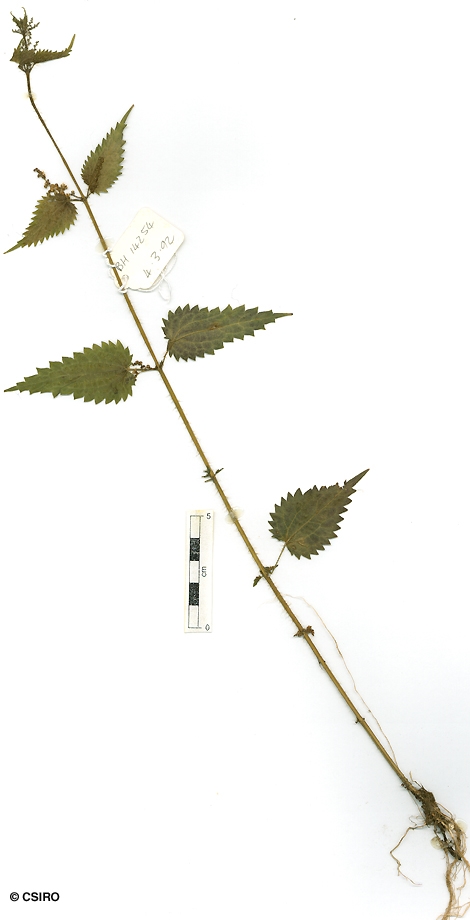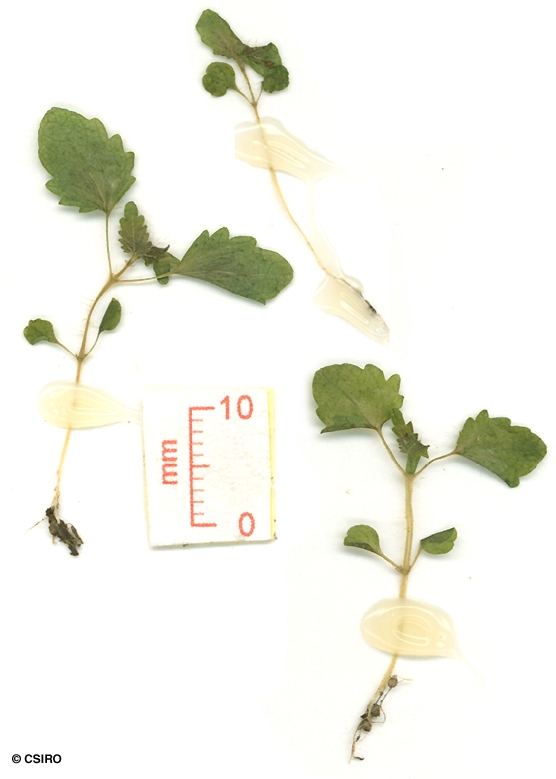Australian Tropical Rainforest Plants - Online edition
Urtica incisa Poir.




Poiret, J.L.M. (1816) Encyclopedie Methodique. Botanique Suppl. 4 : 224. Type: Cette plante croit a la Nouvelle-Hollande, ou elle a ete decouverte par M. de Labillardiere. (V.s. in herb. Desf.).
Stinging Nettle; Scrub Nettle
Usually flowers and fruits as a shrub about 1 m tall but also flowers when smaller.
Inflorescences usually longer than the petioles. Tepals dimorphic, two large and two small, larger tepals about 1.5 mm long, +/- glabrous. Anther filaments corrugated on the inner curve when at the flower bud stage but straightening when the filament flicks outwards and throws pollen to the wind. Pollen +/- white.
Infructescence up to about 5-6 cm long, stinging hairs usually present on some parts. Nuts or achenes resemble seeds and are ovoid and about 2 mm long. Embryo small, less than 1 mm long.
Cotyledons +/- orbicular, about 2 mm diam. First pair of true leaves opposite, margin toothed, upper surface clothed in white hairs and stinging hairs. At the tenth leaf stage: all parts clothed in stinging hairs, leaves broadly lanceolate, margin coarsely toothed. Stipules about 3 mm long. Seed germination time 19 days.
Endemic to Australia, occurs in NEQ and in south eastern Queensland southwards as far as Tasmania. Altitudinal range in NEQ from 500-800 m. Grows in disturbed areas in well developed upland rain forest, usually most abundant in rain forests on very fertile red soils derived from recent basalt flows.
This plant inflicts a painful sting but it does not last long.
Food plant for the larval stages of the Australian Admiral Butterfly. Common & Waterhouse (1981).
Urtication, flogging with nettles, is a traditional European method of treating rheumatism. The same therapy was found in Aboriginal medicine. Cribb (1981).





